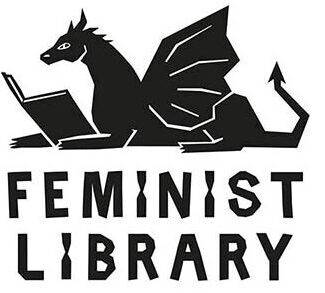Text by Claire M. Holdsworth

Featuring a mixture of sources, this poster brings together transnational dialogues, as well as enacting the call to organise. The ongoing destruction of the black-and-white woodcut-print storm by Brooklyn/Mexico City-based writer-artist Fagan Kuhnmünch dominates the electric, charged atmosphere of the composite poster. Entitled a flood in Bushwick, we see a storm illuminate the dark, lightning above whilst tides rise below, sweeping away police cars and telegraph poles, institutions likewise addressed in the quotation by Spanish anarchist Buenaventura Durruti (1896-1936) that, along with the statement ‘organise’ (in UK spelling), has been added to the bottom. Even as the onslaughts depicted in Kuhnmünch’s print rage from all directions – electrical storms above, waves below – the buildings stand, where seemingly reliable infrastructures are swept away.
The contrasting hopeful power of the ability to rebuild comes from the turmoil of the ongoing storm, a harnessing of power different from those carried by telegraph poles and waves surging through the street. A feeling channelled through Durruti’s affirmation of solidarity beyond borders: invisible, people are unseen here, weathering storms in blocks, where the more visible ‘authorities’ – failing systems of oppressive power, electricity, and the police – are less solid, more easily moved.
Durruti’s emphasis on growth in the face of destruction and its connection with the Brooklyn neighbourhood of Bushwick via the print, is significant. A working-class, formerly industrial part of New York, Bushwick has a long history of waves of (political) movement and migration and is today home to diverse Hispanic communities and cultures. Faced with different policies of ‘urban renewal’ (and gentrification), communities in this neighbourhood have long experienced demolitions and false promises of public housing and/or support. Externally as well as socially, and particularly in terms of the climate emergency, Bushwick has been subject to parallel waves of destruction, from the 1977 electricity blackout to the catastrophic floods of Hurricane Ida in 2021. The power lines and police cars swept away here emphasize the need for alternative sources of power, and the electrically charged storms to which we are all subject regardless of where we are.
Durruti affirms how ‘we carry a new world here’ inside ourselves, echoing strategies in feminist thinking in which ‘the personal becomes political’. Yet, there is an inversion in this poster: rather than being fuelled by the internalised, subjective (and often fragmented) politics of self, the internal is closely linked with the external atmosphere, geographies of resilience despite ongoing storms, the other types of power that can be harnessed to re-build anew after the old systems have been washed away.
More information on Fagan Kuhnmünch/Gnarly Headache, here:
www.gnarlyheadache.com
Bio
Claire M. Holdsworth (she/they) is a writer and curator working in text and sound. Specialising in technology-based art, moving image, and audio theory, their writings and projects explore the voice, activism, performance, and archives. They lecture at University of the Arts London and programme collaboratively as part of SODAA music collective among other projects.
https://independentresearcher.academia.edu/ClaireMHoldsworth
https://www.instagram.com/hollidayholdsworth/
